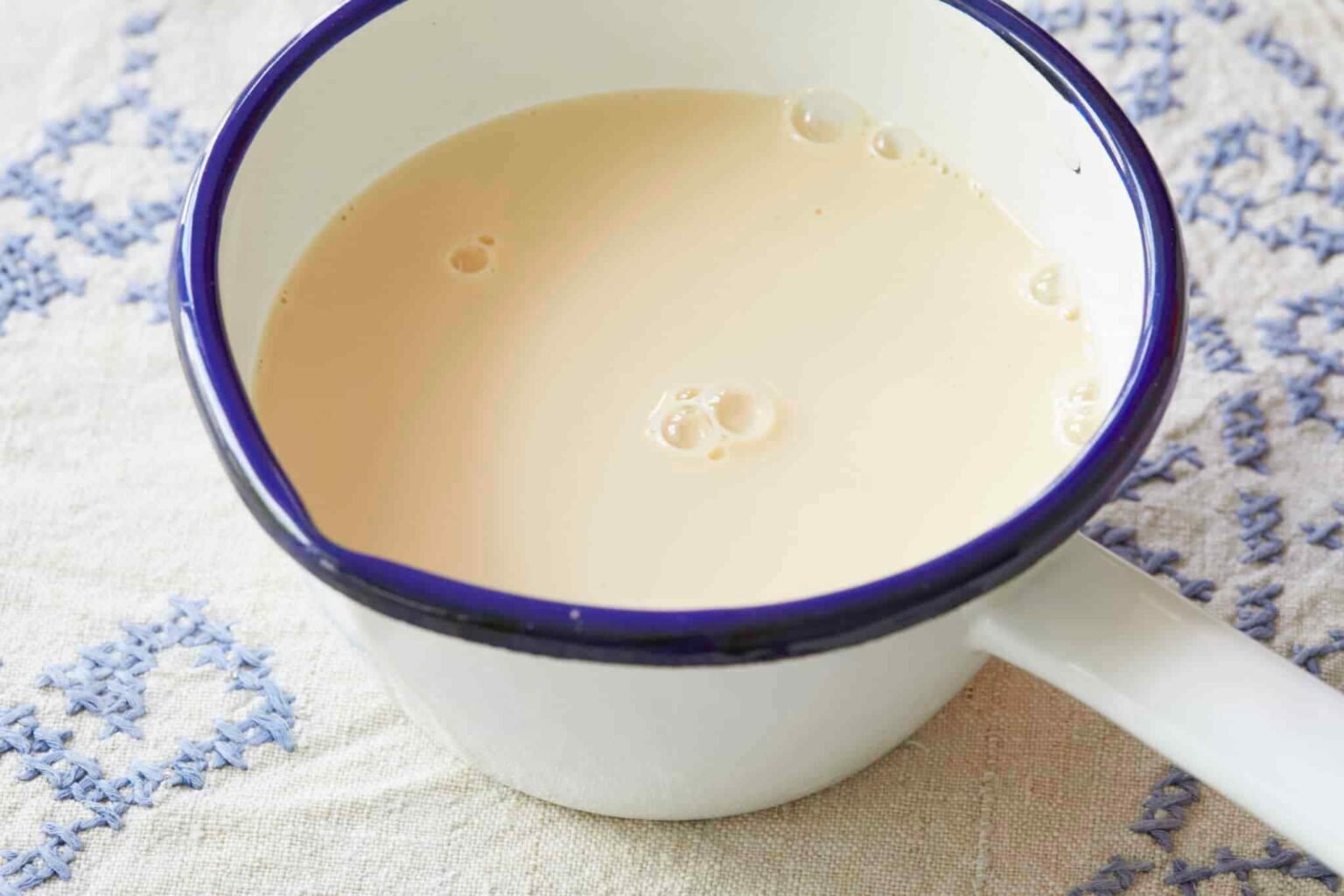Evaporated milk comes in cans or tetra packs and is far thicker than regular, fresh milk. Because 60% of its water content is evaporated, it has a slightly caramel taste.
It is super rich with a few nutty notes, so it pairs impeccably with creamy dishes like soups, sauces, gravies, and baked goods. Evaporated milk has a pretty long shelf life, but can you use expired evaporated milk?
Evaporated milk will be good several months after its expiration date, but only if you store it adequately. Of course, you must check it out before use with three tests: smell, sight, and flavor. Even if the obvious signs aren’t there, bacteria could still be present, so it is crucial to process it thermally. In dishes like soups, casseroles, pancakes, or bread, you can use slightly expired milk without any consequences.
Sharp senses are an amazing skill to have, and they will save you a lot of time and reduce food waste. If something is expired, it doesn’t mean it is spoiled; just scroll down to see how to recognize the signs!
Here’s How to Tell If It’s Safe To Use Expired Evaporated Milk

As with any other ingredient, when possible spoilage of evaporated milk is detected, three senses are used: smell, sight, and taste. The first sign of spoilage is off odor, as fresh evaporated milk smells sweet, almost nutty.
However, if it has sour, rancid, acidic odor, it is most certainly spoiled. This indicates the presence of bacteria or different microorganisms that already started to break down the proteins and fats in milk.
Check the texture next – it is normally a silky, smooth, and creamy blend. On the other side, if you spot any lumps, curdling, or separation of liquid and solids, it is definitely spoiled.
Also, if you notice a change of color in something unusual, like brownish or yellow, or evaporated milk appears gritty and clumpy – toss it out, just to be safe. Mold growth is an evident sign of spoilage, whether it is on the surface of the milk or inside of the container.
Mold in evaporated milk can produce toxins that are harmful to your health, so it’s important to discard it immediately. Remember to also inspect the packaging for any signs of damage.

Search for any signs of damage – bulges, dents, or leaks, as they compromise the seal and cause it to go bad. If you still haven’t caught sight of any spoilage but are still not sure, do the taste test.
Fresh evaporated milk has a mild but sweet, creamy flavor. Decayed milk will most definitely have a sour, bitter, and somewhat off-taste. You can take a small sip and swish it around your mouth to be 100% sure.
Always recall to check the expiration date on the packaging. Unopened evaporated milk typically has a shelf life of between six to twelve months, so try to use it within this timeframe.
Nonetheless, packagings have “best by” or “use by” dates, which indicate the optimal quality, not the safety. Following this, a sealed pack of milk will still be safe to consume even beyond the expiration date.
However, this depends on two factors: storage conditions and the quality of packaging. For instance, canned evaporated milk will keep its freshness longer than the one in a carton pack.
Generally, if kept in a cool, dry place, it will be safe to consume for a couple of months after the expiration date. Still, check it out for any sign of spoilage before using it!
What Happens If I Use Expired Evaporated Milk?

Slightly expired evaporated milk won’t change anything drastically, but the quality will deteriorate. It will probably alter both the taste and texture while still being safe to consume; the overall experience won’t be as pleasant, though.
If you decide to use it in cooking, it may aid in killing any present bacteria. But, it is possible the taste will turn out stale and foul.
Now, when speaking about evaporated milk with expiration date long gone, it can cause some troubles.
While cooking, it will probably curdle because proteins in the milk separate from the liquid. Acidic, alcoholic, or starchy ingredients can cause clotting, as well.
Foodborne illnesses are the worst-case scenario, but not impossible. As noted above, expired evaporated milk is a blank canvas for harmful bacteria growth – E.coli, Salmonella, or Listeria, which multiply in the milk and produce toxins.
Milk doesn’t need to show visible signs of deterioration to produce toxins and cause illness when consumed. You could experiences symptoms like vomiting, diarrhea, abdominal cramps, or fever.
Some people are more exposed than others, though. Elderly, young children, pregnant ladies, or those with weakened immune systems should be very careful when consuming any expired food.
Mildly expired evaporated milk will probably be fine to consume; thus, it is crucial to check it out well, as every individual’s sensitivity is different.
Can You Use Expired Evaporated Milk for Specific Purposes?

Baking with expired evaporated milk is not ideal, but it could actually work. Of course, this only applies to slightly expired products that have no taste or texture changes.
High temperatures kill bacteria that may be present in the milk. To ensure food safety, though, make sure to thoroughly bake your dish.
Nevertheless, if milk shows any signs of deterioration – it will affect the taste, aroma, and probably the texture of baked goods. A sour taste or weird texture shouldn’t surprise you.
To make that better, alternate a recipe a bit – add more liquid or fats to compensate for the potential loss of richness or moisture. Still, if your food smells rancid, it is best not to consume it.
When it comes to drinking slightly expired milk – skip it! It is more risky, as it is not thermally processed, and you could give yourself a bacterial infection.
As said before, cooking or baking could reduce the risk of illness, while consuming it fresh boosts the possibility of harmful bacteria ingestion.
So, skip these risks and don’t drink expired evaporated milk under any circumstances!
In dishes where evaporated milk cooks completely, a slight expiration won’t make a big change, especially if there are plenty of other flavors to mask its off-smack. Add it to casseroles, soups, sauces, and gravies to intensify their richness and silkiness.
Other additions like cheese or cornstarch will disguise any potential curdling, while spices cover up the taste. In baked goods – cakes, cupcakes, biscuits, bread, brownies, evaporated milk adds sponginess and will blend in perfectly even expired.
Pets are not as vulnerable to foodborne illnesses as humans, but don’t give them even slightly expired evaporated milk. Even though milk doesn’t seem spoiled, it can still be packed with bacteria.
They are definitely more sensitive to these kinds of things, which can make their digestive tract upset. Vomiting, diarrhea, and abdominal pain are not unusual.
Storing Opened Evaporated Milk

As soon as you open the evaporated milk, it should go straight to the fridge to maintain its freshness. Room temperature skyrockets the chances for its spoilage.
Evaporated milk usually comes in unhandy containers, so it is better to transfer the rest of it into an airtight container or cover it with a tight-fitting lid. Also, it won’t last forever once opened – it will be good for 3-5 days at maximum.
Freezing is not the best option, though, as texture and quality drop drastically. It can cause the milk to turn out grainy and gritty. It freezes well if you add it to soups or sauces, but not so much alone.



